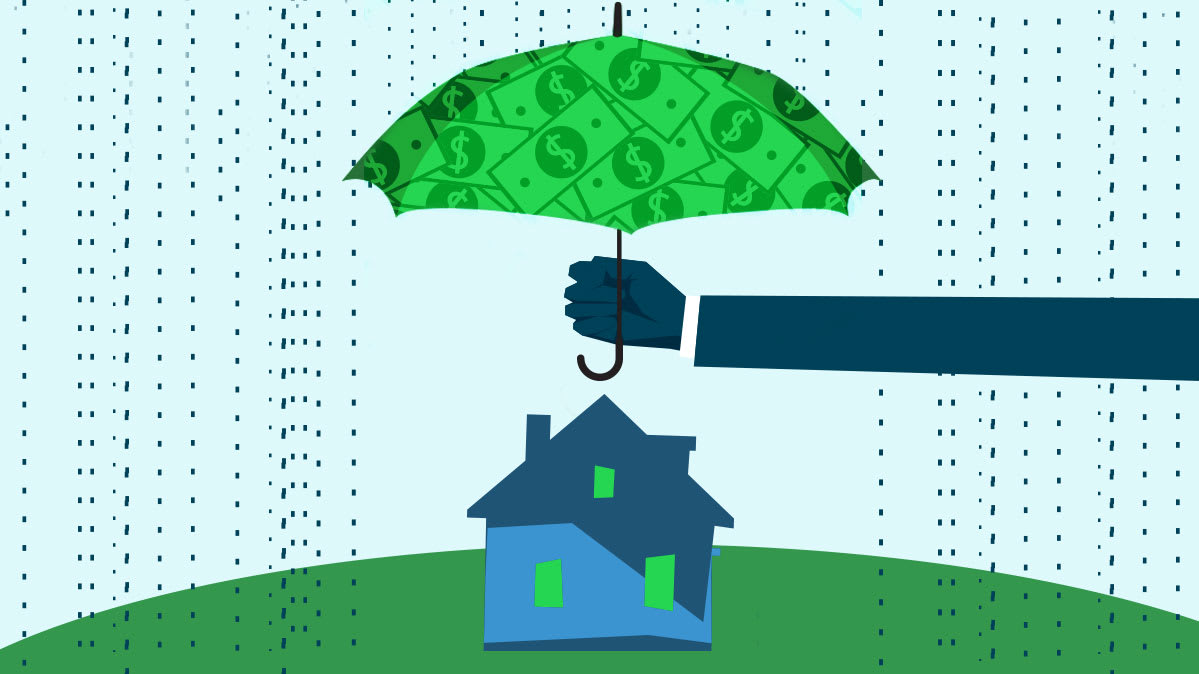The price you pay for your homeowners insurance can vary by hundreds of dollars, depending on the size of your house and your insurance company. From shopping around to making home improvements, here are some ways to save money while you adequately protect your home and assets.
Stay with the same insurer
If you’ve been insured with the same company for a number of years, you may receive a discount for being a long-term policyholder. But to ensure you are getting a good deal, periodically shop around to compare your premium with the prices of policies from other insurers.
Do not confuse what you paid for your house with rebuilding costs
Your homeowners policy is based on the cost to rebuild your home, not its real estate value. While your house may be at risk from theft, windstorm, fire and the other perils, the land it sits on is not, so don’t include its value in deciding how much homeowners insurance to buy. If you do, you’ll pay a higher premium than you should.
Don’t skimp—but do shop around
Having homeowners insurance is undoubtedly an expense—but it is also your protection against potential disaster and financial ruin. Homeowners policy prices vary from company to company, so do some comparison shopping and get the best deal you can.
- Get quotes from at least three companies.
- Contact the state insurance department to find out whether they make available consumer complaint ratios by company. If they do, check into the insurers you’re considering doing business with.
- Check the financial health of prospective insurance companies by using ratings from independent rating agencies and consulting consumer magazines for reviews.
- Don’t shop price alone. Remember, you’ll be dealing with this company in the event of an accident or other emergency. When you need to file a claim you’ll want an insurer that provides good customer service, so test that while you’re shopping, and choose a company whose representatives take the time to address your questions and concerns.
- For price quotes, call companies directly or access information on the Internet. Your state insurance department may also provide comparisons of prices charged by major insurers.
- Ask friends and relatives for recommendations for insurers and then do your due diligence.
Raise your deductible
A deductible is the amount of money that you are responsible for paying toward an insured loss. The higher your deductible, the more money you can save on your premium, so if you can pay above the minimum $500 or $1,000 deductible, for example, you may reduce the cost of your homeowners policy.
If you live in a disaster-prone area, your insurance policy may have a separate deductible for damage from major disasters, so be sure you take this into account when considering whether to raise your standard homeowners deductible.
Make your home more disaster resistant
If you live in a disaster prone area, you will have more insurance options to choose from if you take certain preparedness steps— for example, installing storm shutters and shatterproof glass or reinforcing your roof. Older homes can be retrofitted to make them better able to withstand earthquakes. Consider modernizing your heating, plumbing and electrical systems to reduce the risk of fire and water damage. These precautions may prevent excessive damage and the related work and stress involved in rebuilding.
Ask about discounts for home security devices
Most insurers provide discounts for security devices such as smoke detectors, burglar and fire alarm systems or dead-bolt locks. As some of these measures aren’t cheap and not every system qualifies for a discount, consult your insurance professional for recommendations.
Seek out other discounts
Types and levels of discounts vary from company to company and state to state. Ask your insurance professional about discounts that are available to you—for example, if you’re 55 years old and retired, or you modernize your plumbing or electrical systems, you may be qualify for a price break.
Look into group coverage
Does your employer administer a group insurance program? Check to see if a homeowners policy is available. In addition, professional, alumni and business groups may offer an insurance package at a reduced price. Whatever the offer, do your homework to make sure it is a better deal than you can find elsewhere.
Buy your home and auto policies from the same insurer
Many companies that sell homeowners insurance also sell auto insurance and umbrella liability policies. If you buy two or more insurance policies from the same provider, you may be able to reduce your premium. To be sure you’re getting the best price, make certain any combined price from one insurer is lower than buying the coverages separately from different companies.
Review the value of your possessions and your policy limits annually
Review your home inventory and any upgrades to your house or condo. Make sure your homeowners or renters policy covers any major purchases or additions to your home and also check that you’re not spending money for coverage you don’t need. For example, if your five-year-old fur coat is no longer worth the $5,000 you paid for it, you’ll want to reduce or cancel your floater and pocket the difference.
Another great way to save money on your homeowners policy is to take into account the cost of insurance while you’re shopping for a house and before you buy. These home buyers’ insurance guidelines provide tips on the locations, types of construction and other factors that will help keep down the cost of your coverage.

